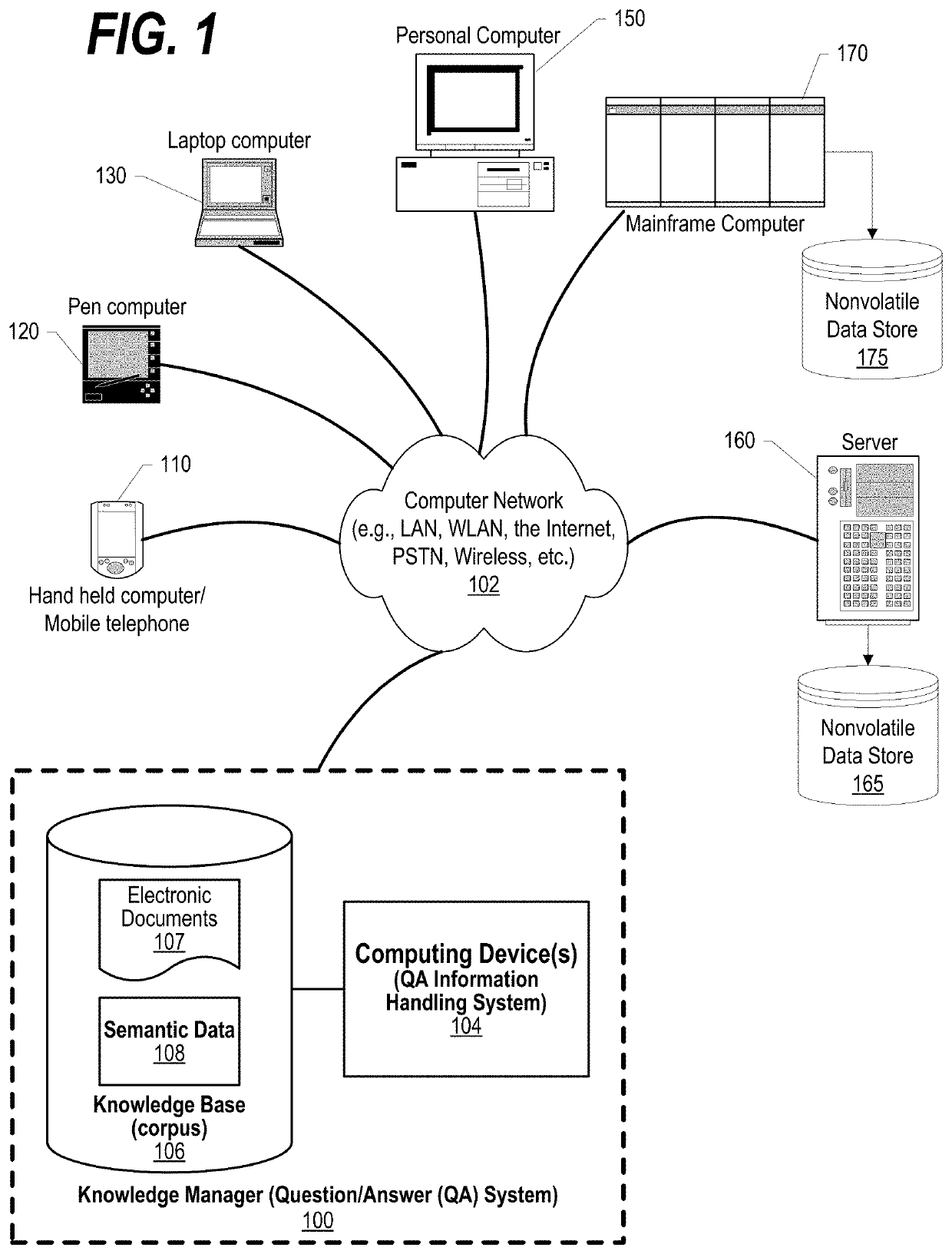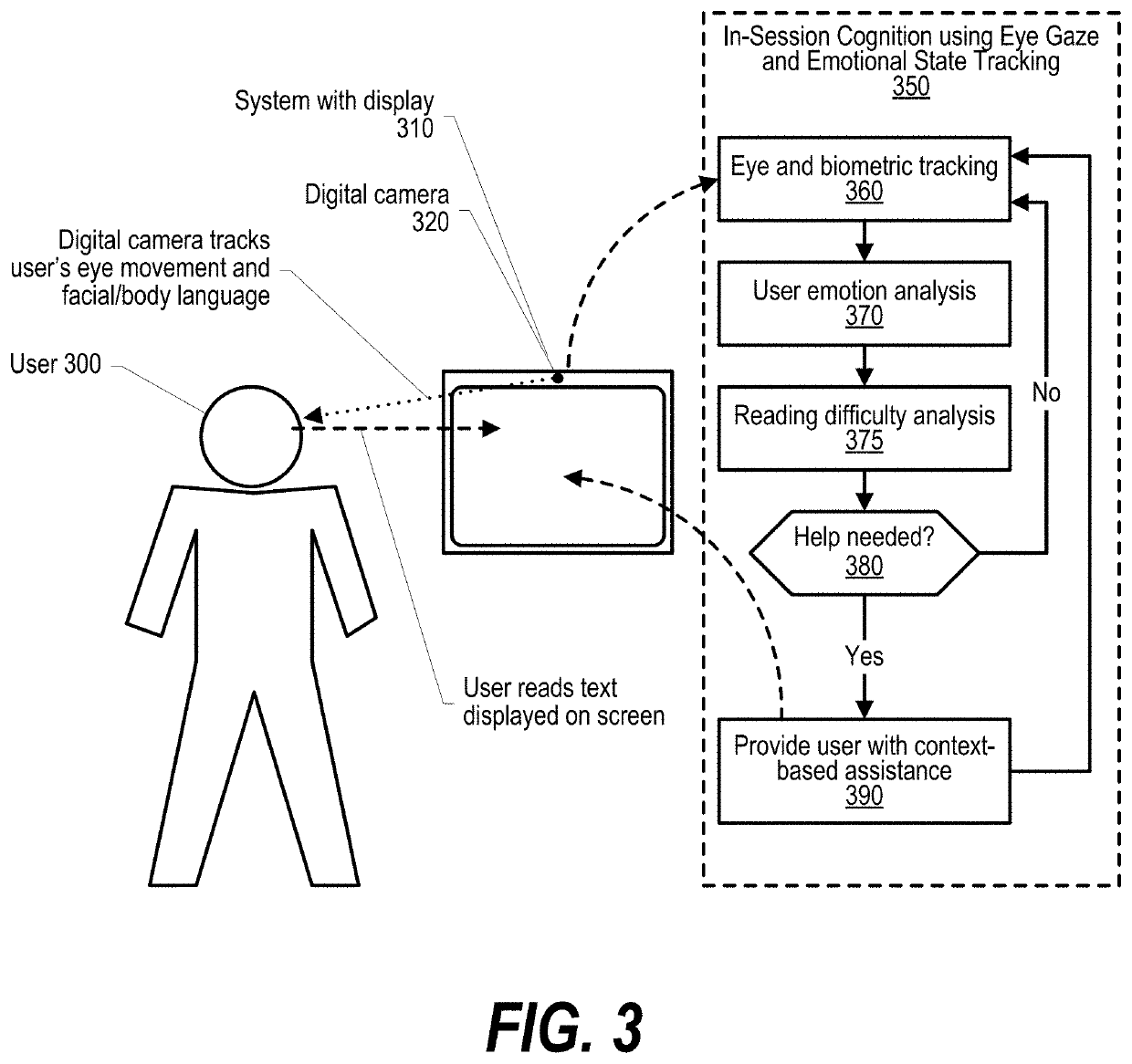Assisting Learners Based on Analytics of In-Session Cognition
a technology of in-session cognition and assisting learners, which is applied in the direction of diagnostic recording/measuring, instruments, teaching apparatus, etc., can solve the problems of traditional systems not exploiting the capability of computing the cognitive difficulty of a reader reading inside a session, traditional systems provide no rewards, and traditional approaches fail to account for the cognitive ease of reading being performed by the user
- Summary
- Abstract
- Description
- Claims
- Application Information
AI Technical Summary
Benefits of technology
Problems solved by technology
Method used
Image
Examples
Embodiment Construction
Overview of the Invention
[0012]FIGS. 1-7 depict an approach that uses eye tracking to identify the portion of a display screen that the user is currently reading, along with the reading rate or reading comfort level being exhibited by the user. Emotion tracking is used to identify the nuances of the user's comfort or discomfort with the reading material, such as the user being, “surprised,”“thinking,”“upset,”“relaxed,” etc. during the reading process. Natural Language Processing (NLP) techniques are used to parse the document and link entities based on concepts, keywords, or other factors. When the system detects that the user is encountering difficulty at some part of the document, for instance, by eye tracking the position and emotional tracking the user's current state, then related terms, definitions and concepts from earlier or already—read sections of the same document (or set of documents within the a reading session) may be presented, where the reader's cognition has been fo...
PUM
 Login to View More
Login to View More Abstract
Description
Claims
Application Information
 Login to View More
Login to View More - R&D
- Intellectual Property
- Life Sciences
- Materials
- Tech Scout
- Unparalleled Data Quality
- Higher Quality Content
- 60% Fewer Hallucinations
Browse by: Latest US Patents, China's latest patents, Technical Efficacy Thesaurus, Application Domain, Technology Topic, Popular Technical Reports.
© 2025 PatSnap. All rights reserved.Legal|Privacy policy|Modern Slavery Act Transparency Statement|Sitemap|About US| Contact US: help@patsnap.com



